What is the most important factor in getting your bird photographs noticed by a large audience? Is it the camera or the lens or the bird?

Imagine you have a Canon 1DX or Nikon D4 and 800mm lens. You have been to a place to photograph the magnificent Bald Eagles. Everything seems perfect! Isn’t it?
But, what if you do not know what makes a good bird photograph? Do you think just by shooting a burst of photographs will give you the best photographs? Definitely not…you may get snapshots but not photographs.
“There is nothing worse than a sharp image of a fuzzy concept.” – Ansel Adams
Today you will learn some of the core principles of Bird Photography that will give you an understanding of what makes a good bird photograph.
1. You Don’t Need Expensive Lenses for Great Bird Photography
A great bird photograph does need several factors such as:
- Quality and Direction of the light
- Composition
- Knowledge about the bird and its activities
- Background
- Knowledge about the gear you are using
- Proper Settings
- Proper Exposure
- Your position
- 3 + 1 Ps (Patience, Perseverance, Practice + Passion)
You see, it takes a lot more to become a good bird photographer. A decent APS-C or DX format camera body with telephoto lens of up to 300mm is more than sufficient to really get great bird photographs.
It is important to realize that bird photography is much more than just the camera or the lens. There is no denial of the fact that the longer the lens, the easier it is to photograph birds which are skittish. But, the lens itself cannot make a great bird photograph.
But, if you do not have a longer telephoto lens, nothing stops you from taking a great photograph of birds like Mallard ducks, geese, gulls, and herons that are easily approachable. If you cannot take a close-up of a Bald Eagle, nothing stops you from taking a unique photograph of a Bald Eagle in its habitat.
Everything boils down to how you view the situation. “Is the glass half empty or half full?”
2. Light and Composition
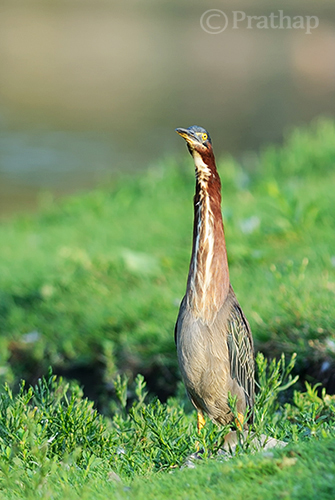 Photography is all about light. Light has few characteristics that will make a photograph wonderful.
Photography is all about light. Light has few characteristics that will make a photograph wonderful.
Early morning and late afternoon light is usually the best time for bird photography. The light during these times is soft. As a bonus, the birds are very active as well.
Soft light has some wonderful characteristics like:
- It does not cast harsh shadows on the bird
- It brings out a glow to the bird’s plumage
- It gives the catch light in bird’s eye
Composing a bird photograph helps you to convey your message in the best possible way. Bird Photography composition is generally very simple. Following a few basic composition principles will help you make a difference:
- Use rule of thirds composition to place the bird off-center
- Use color contrast by aiming for complementary background
- Fill the frame with the bird
- Use a clean background
3. Transport the Viewer into the Bird’s World
We see our world at 5 to 6 feet high, but birds see the world in few inches to few feet. To get a feeling of the bird’s world, then you need to get down to their level!
Go Low and Go Slow…
Always try to photograph the birds from their eye level, except the birds in flight of course. It has greater benefits that will overshadow any of your complaints like I can’t bend down, lie down etc. Some of the obvious benefits are:
- You get more intimate photographs of birds since you will get an eye contact
- You will get pleasing blur both in the foreground and background
- You make the bird less scared since you can hardly move
- You will transport the viewer into the bird’s world
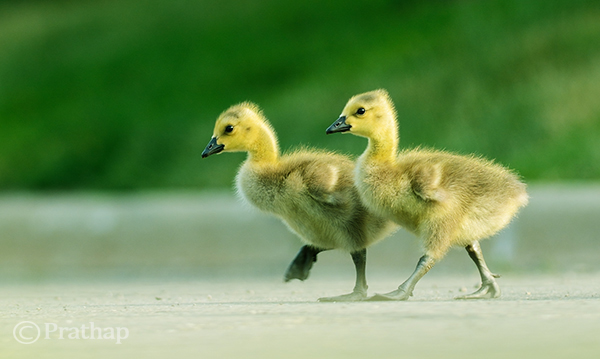
4. It’s all in the Eye
Take a look at any photograph of a bird. What is the first thing you want to see? It’s the eye…right?
We tend to make an eye connection with any living being. It is no different with birds. The eyes are the windows to the soul. If there is no light in the eyes, then they look dull or lifeless. Birds look lively when there is light in their eye.
This light in the eye is called a catch light.

By following few guidelines you can easily get better bird photographs:
- Always keep the bird’s eye in sharp focus
- Check for a catch light in the bird’s eye (easy to get if the bird is front lit)
- Make sure to photograph from bird’s eye level
5. Fill the Frame
In bird photography, mostly we photograph an individual bird. While photographing individual birds, it is always a good idea to fill the frame with the bird.
Advantages of filling the frame with the bird are:
- It is easy to focus on the bird
- It is easy to achieve a pleasing blur or bokeh effect in the background
- It is easy to properly expose for the bird
- It is easy to compose in the field
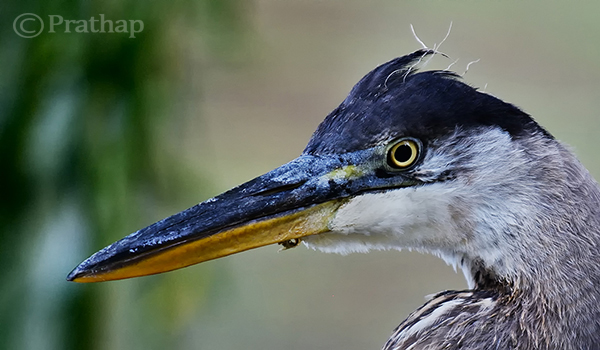
6. Tell a Story
Storytelling in bird photography should not be confused with the stories that run for pages. Storytelling is a way to express the time of the day, mood, place or activity of the bird in one photograph. Viewers should be able to picture themselves in the scene.
Simply put, a photograph with bird and its surrounding will give a better sense of story than just the bird filling the frame. Though, it may not always be true.
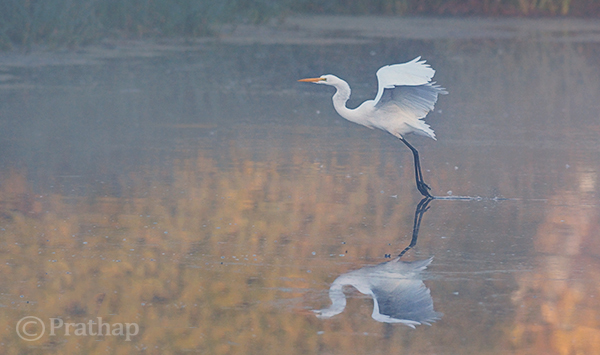
Here are few tips you can follow while you photograph a bird in its habitat:
- Make the bird an integral part of the photograph by including its natural habitat
- Show the interaction of birds if there is more than one bird in the photograph
- Indicate the weather conditions by including either snow, rain or mist
- Take photographs during sunrise and sunset
- Show season by including flowers in bloom, autumn colors, or snow
7. Capture their Action and Behaviour
Birds are always in action. They hardly sit idle. Capturing birds in action involves more effort and patience compared to photographing perched birds.
Here are few tips to capturing birds in action:
- Photograph early in the morning or late in the afternoon when birds are very active
- Use burst shot mode to take several photographs during the action
- Track the bird until focus is locked before pressing the shutter
- Learn to anticipate the action either by observing or reading about them
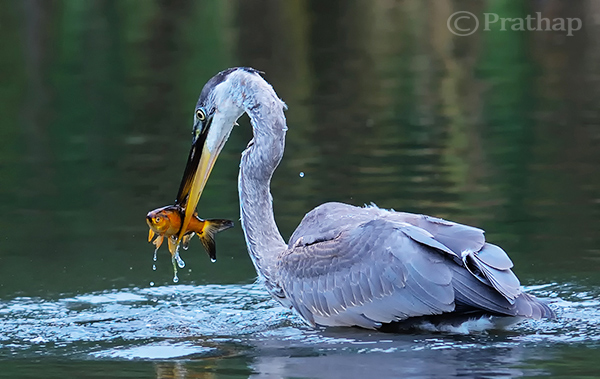
Birds tend to ignore you when they are very hungry. It is very easy to photograph them in action during these times. But, care should be taken not to disturb them and maintain considerable distance.
Capturing bird’s behaviour is much tougher than any other aspect. Generally because birds become alert the moment you are in their sight.
The alert bird is always trying to fly away and rarely will you see its behaviour. You can observe actual behaviours of a bird when it is comfortable. There are few ways to make the bird comfortable:
- Use a natural place to hide, like a bush or tree or something that obscures you
- Wait patiently until the bird ignores you
- Visit the location several days in a row, until the bird becomes comfortable with your presence or you get the right opportunity
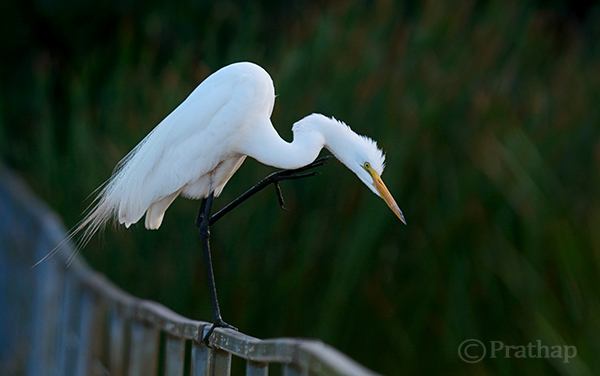
Remember to research and learn everything about the bird you are photographing. This will definitely make you a better bird photographer and also you will enjoy knowing about the bird.
8. Capture their Magnificent Flight
The most interesting part of bird photography is capturing their magnificent flight. This is a very tricky aspect for beginners and pros alike. It is not easy to take flight photographs that will wow viewers.
The success with birds in flight photography largely depends on the bird as well as the technique that one employs. Smaller birds are generally very erratic in their flight and also a bit difficult to track since they are generally too small in the frame. But the larger birds are slightly less swift and are not as difficult to track.
If you want to be successful with flight photography, start with the larger, slower moving birds. Learn all the field techniques to capture the perfect photographs of these birds.
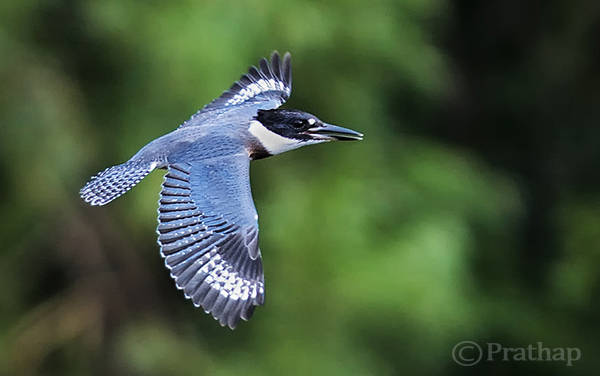
Here are simple tips that will help you capture those magnificent flight photographs:
- Learn about the bird’s flight patterns
- Know their landing and taking off patterns
- If there is more than one bird, it is almost always the case that if one flies, the rest will follow the suit
- Track the bird for a while and let the camera achieve focus before pressing the shutter
- Use Aperture Priority so that you do not have to worry much about the changing light conditions
9. The Background Makes the Picture
This is one of my favourite topics which I repeat often. What are your thoughts on this? – Is it the background or the bird which makes the picture?
Go through all your favourite bird photographs and see it for yourself. Let me know what you think, in the comments below.
Except extreme close-up portraits of birds, every other type of bird photograph will look great when the background is clean and complementing the bird.
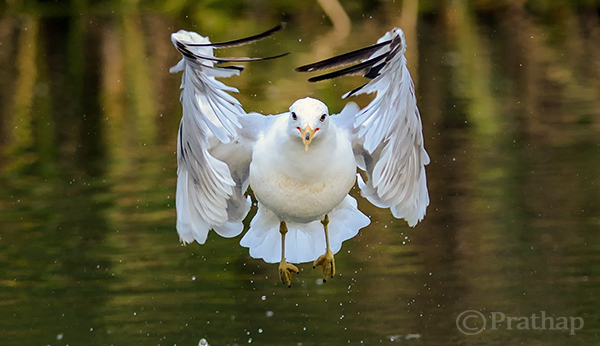
It is very important to keep a check on the background while taking bird photographs. Just follow these simple tips:
- Avoid taking bird photographs when the background is too distracting
- Avoid taking bird photographs when the background is plain and boring
- Wait for the bird to assume a good position or you change your position to get an interesting background
- Choose maximum aperture values to throw the background completely, or slightly out of focus
10. Practice with Common Birds
I urge you to practice with common birds. You might have understood by now that the techniques are not dependent on camera, lens or the bird. I was using 18-200mm lens for first 4 years. I learned and practiced most of my birding techniques with common birds like seagulls, Mallard ducks, geese and herons.
I spend most of my time photographing these common birds, and I gave myself a challenge to make some unique photographs of them, that has fuelled my passion so long. I put more importance on learning and practicing photography, than whatever gear I possess. I am very glad to say that I learned most of the photography basics here at Digital Photography School.
I hope my story so far is an inspiration to you to embrace the beauty of these common birds.
Wrap up
 Focus your time and energy in learning all the core principles outlined above. Prove it to yourself that you have so much passion to go out and photograph the birds every day, or as often as you can.
Focus your time and energy in learning all the core principles outlined above. Prove it to yourself that you have so much passion to go out and photograph the birds every day, or as often as you can.
Remember that proper techniques will always outsmart equipment. Make every attempt to make amazing photographs of the common birds. Enjoy photographing birds. That is the secret to success.
Share your experience with us. Do you go out very often to photograph birds? Do you think technique outsmarts the equipment? I would be glad to answer any questions you have. Do let us know if you have any other suggestions on bird photography.
The post 10 Incredible Bird Photography Tips for Beginners by Prathap DK appeared first on Digital Photography School.


 The first time we heard about Sharon, she was snapping a baby giraffe in this Etsy interview. That’s when we knew that she probably had the best job in the world.
The first time we heard about Sharon, she was snapping a baby giraffe in this Etsy interview. That’s when we knew that she probably had the best job in the world. Q: You’ve photographed buffalo, cows, giraffes, lions even! Is it intimidating to stand in front of an animal that large with your camera?
Q: You’ve photographed buffalo, cows, giraffes, lions even! Is it intimidating to stand in front of an animal that large with your camera? Q: So, kittens and puppies aren’t known for their sitting-still-in-one-spot skills. How do you manage to get great photos of them regardless?
Q: So, kittens and puppies aren’t known for their sitting-still-in-one-spot skills. How do you manage to get great photos of them regardless? Q: When you’re shooting for your Animal Print Shop series, how many shots does it take to get that one incredible photo?
Q: When you’re shooting for your Animal Print Shop series, how many shots does it take to get that one incredible photo? 
 Q: Can you describe a shoot (let’s say one from your Animal Print Shop series) in 5 steps? Give us an idea of what happens start to finish!
Q: Can you describe a shoot (let’s say one from your Animal Print Shop series) in 5 steps? Give us an idea of what happens start to finish! Q: What is having a professional team like? Are you ever like, “I wish it was just me?”
Q: What is having a professional team like? Are you ever like, “I wish it was just me?”  Q: You’re pretty much running your own business as a photographer. What do you do a lot of now that you didn’t realize you would be doing when you started?
Q: You’re pretty much running your own business as a photographer. What do you do a lot of now that you didn’t realize you would be doing when you started? Q: In commercial photography how much creative free-reign do you typically get? We’re guessing you’re working with clients’ marketing teams and maybe stylists — how collaborative is it?
Q: In commercial photography how much creative free-reign do you typically get? We’re guessing you’re working with clients’ marketing teams and maybe stylists — how collaborative is it? Q: When you want to photograph your own stuff, where or who is your favorite inspiration?
Q: When you want to photograph your own stuff, where or who is your favorite inspiration?  Q: We see you’re on Instagram. (OMG wolf puppy!) Do you have any favorite apps or tips?
Q: We see you’re on Instagram. (OMG wolf puppy!) Do you have any favorite apps or tips?























You must be logged in to post a comment.